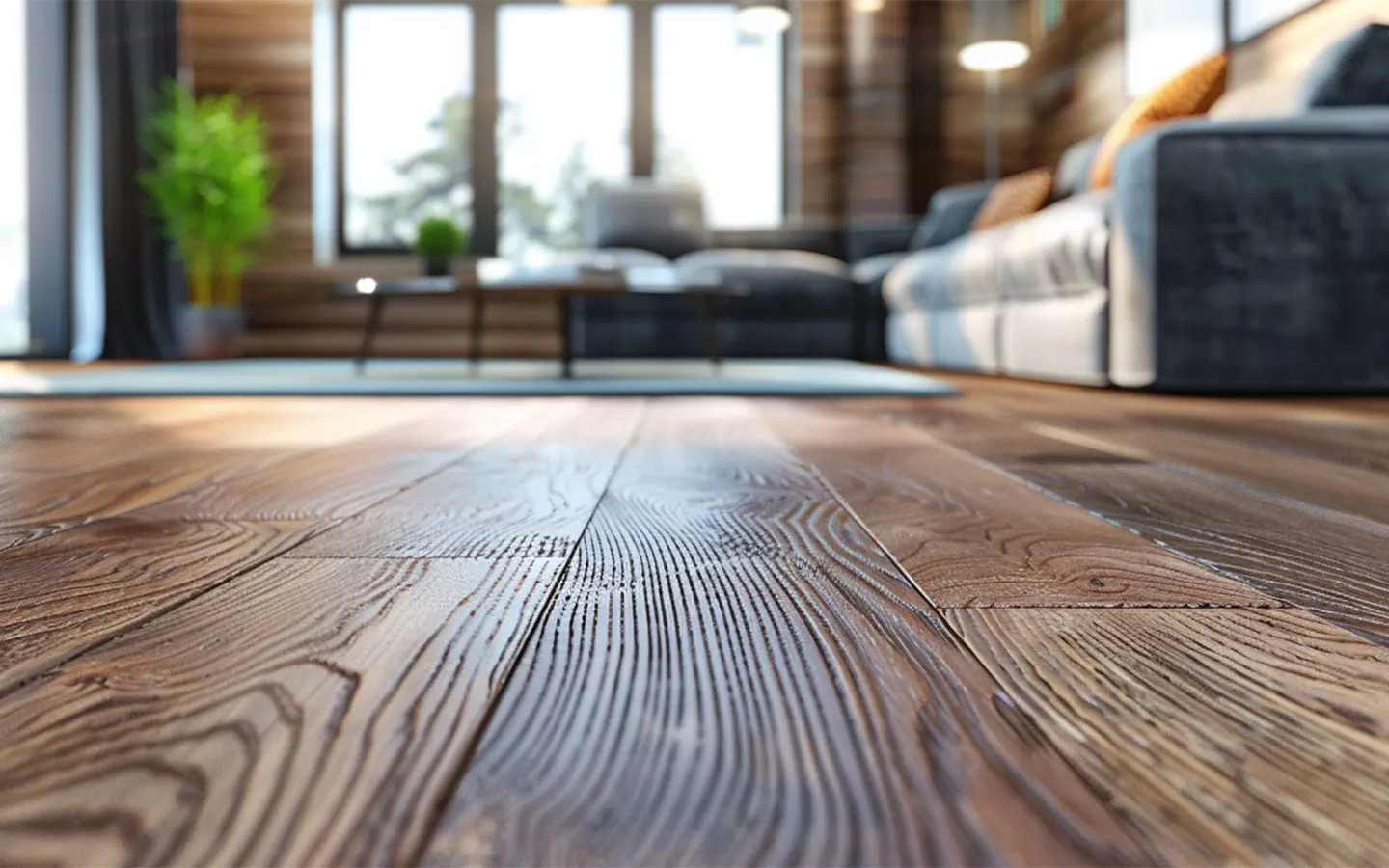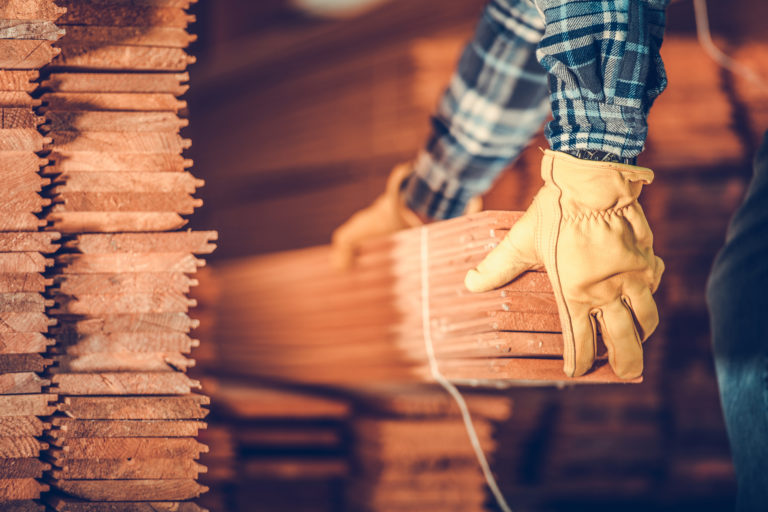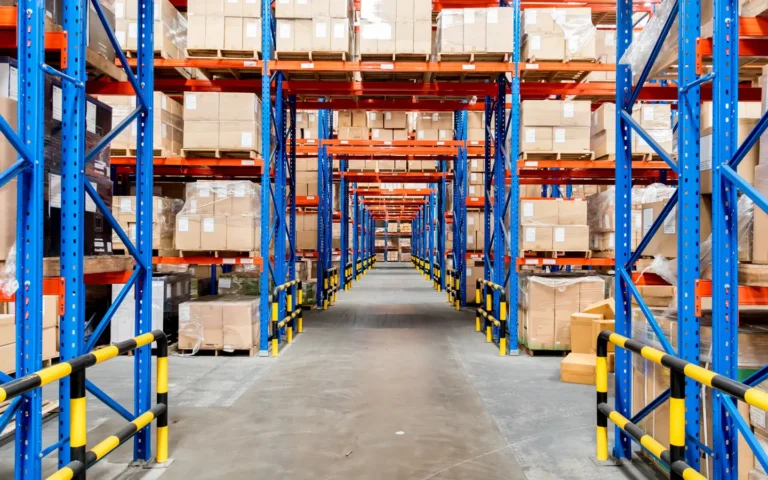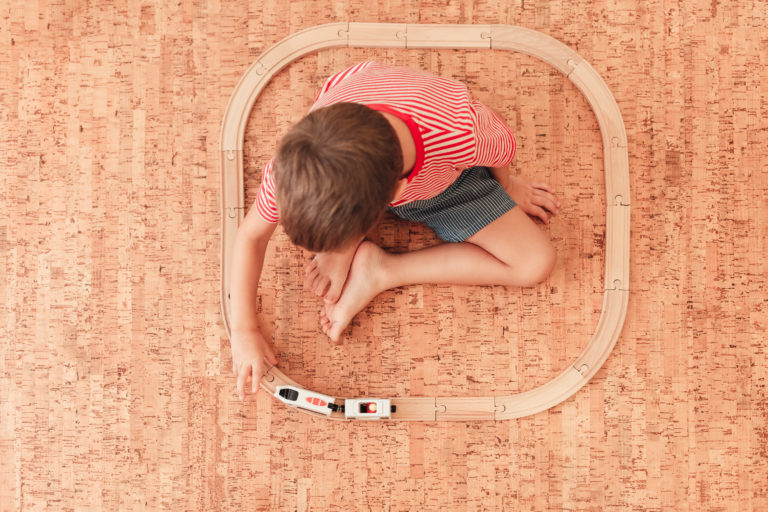When it comes to updating your floors, the idea of laying luxury vinyl plank (LVP) over existing hardwood might raise a few eyebrows. Why cover up hardwood, right?
Well, it’s not about hiding those floors; it’s about making smart, practical updates that work for your lifestyle. In this piece, we’re cutting through the noise to focus on the specifics: what you really need to think about when installing LVP over hardwood.
There are a few good reasons to go this route. Maybe you love the look of hardwood but need something more durable and low maintenance. Or perhaps your existing floors have seen better days, but you’re not ready for a full replacement. Whatever your reasons, we’re here to walk you through this process step by step.
Why Do People Decide for LVP Over Hardwood Installation

Whether your once-pristine hardwood floors are showing their age or your bustling household demands a more resilient surface, opting for vinyl vs. hardwood offers tangible benefits. This practical choice brings durability, moisture resistance, and ease of maintenance to the forefront, all while providing a cost-effective solution to refresh your space without sacrificing the aesthetic appeal of wood.
Let’s take a look at what you stand to get if you decide to place vinyl flooring over hardwood:
Vinyl flooring can withstand heavier use:
When we talk about covering hardwood with LVP, the first thing that comes to mind is durability. Hardwood is beautiful, no doubt, but it has its vulnerabilities—scratches from pet claws, dents from dropped items, and wear paths in high-traffic areas. LVP, on the other hand, is like armor for your floors. It’s designed to withstand a lot more abuse, making it an ideal overlay for preserving the hardwood underneath while keeping your floors looking pristine.
It also offers much better water protection:
Then there’s the moisture aspect. In our experience, water incidents are not a matter of “if “but “when”. Hardwood doesn’t fare well with moisture—it can warp, swell, or discolor. LVP is practically impervious to water, making it a smart layer of protection for your hardwood, especially in areas prone to spills or humidity. This feature alone can save you from potential headaches and costly repairs down the line.
And vinyl is far easier to maintain compared to hardwood:
Maintenance is another area where LVP really shines. Hardwood floors require a certain level of care—regular cleaning, occasional refinishing, and the need to be mindful of moisture and scratches. With LVP, maintenance is a breeze. It doesn’t demand much more than a sweep and a mop. For anyone with a busy lifestyle or who’d rather not fuss over their floors, LVP offers a worry-free solution that keeps your space looking sharp with minimal effort.
Vinyl is also kind to your budget:
Cost-effectiveness is something we’ve seen many homeowners appreciate. Refinishing hardwood floors can be expensive, and replacing them even more so. Laying LVP over the top offers a fresh look and added functionality at a fraction of the cost. It’s an economical way to update your space without sacrificing quality or aesthetics.
Best Brands of 2024
Vinyl doesn’t fall short on aesthetics:
We know that hardwood is champion when it comes to aesthetics but LVP has come a long way when it comes to mimicking real hardwood floors. Today’s options include realistic textures and patterns that closely mimic hardwood, stone, and more. This means you can refresh your space’s look without straying from the natural beauty of wood.
Installation is a breeze:
From a practical standpoint, installing LVP over hardwood is also less disruptive. There’s no need to remove the existing flooring, which means less mess and a quicker turnaround. This is a big deal in a world where time is precious. You can essentially get a floor makeover without turning your home into a construction zone.
Considerations Before Installation
Before you jump into laying LVP over hardwood, there are a few key things you’ll want to check to ensure a smooth and successful installation:
Closely inspect your hardwood flooring:
First off, take a good look at your existing hardwood. It needs to be in relatively stable condition, even if it’s not cosmetically perfect. Take a walk around, really paying attention to how the floor feels underfoot. Notice any movement or creaking? That’s a sign of loose planks. Look out for visible warping or cupping in the wood, too—these are signs of moisture issues and unevenness.
Fix any loose planks:
For loose planks, it’s often a case of re-securing them to the subfloor. You can do this with finishing nails or wood screws, but make sure to countersink them slightly so you can fill and sand the area smoothly.
Minor dips and rises in the floor can often be smoothed out with a bit of sanding. Use a belt sander for efficiency, keeping it moving to avoid gouging the wood. For dips, a self-leveling underlayment can be a game-changer. Just follow the product instructions carefully to ensure a smooth, level surface.
Recognize the deal-brakers:
If your hardwood is extensively damaged—think large areas of warping, deep cracks, or signs of rot—it might not be the best candidate for LVP overlay. These issues can compromise the stability of your new flooring. In cases of severe unevenness or structural issues, consulting a professional might be your best bet to ensure your base floor is up to snuff.
Moisture check:
LVP is tough against moisture, but you still want to make sure the area beneath is not a moisture trap. Use a moisture meter to check the hardwood’s moisture content; you’re looking for a reading below 12%. If it’s higher, you might need to address moisture issues first. This could involve sorting out any leaks or considering a moisture barrier between the hardwood and the LVP.
Check your doorways:
With the added height of LVP, doors might not open and close smoothly anymore. It’s pretty common to find that the bottom of interior doors needs trimming. A simple way to check is to lay down a piece of your LVP (with any underlayment you plan to use) near the door and see if it swings freely above it.
If not, you’ll likely need to remove the door and trim off the excess from the bottom. A hand saw or a power circular saw can do the job, but be sure to sand the edges to prevent splintering.
Thresholds and transitions
Transition areas, where your new LVP flooring meets other types of flooring, can get a bit tricky with the added height. You want to avoid creating a trip hazard or an awkward step. This is where transition strips come into play. They’re designed to bridge the height difference and provide a smooth transition between different flooring types. When selecting transition strips, look for ones that complement both the LVP and the adjoining floor material to ensure a cohesive look throughout your home.
Choosing the right adhesive
If you opt for the glue-down method for vinyl planks over your hardwood floors, selecting the right adhesive is critical to ensure a strong, lasting bond between the two materials. A pressure-sensitive adhesive (PSA) is often the best choice for wood-to-vinyl adhesion because it’s engineered to provide a durable yet flexible bond. This flexibility is key, as it accommodates the natural expansion and contraction of the flooring materials without compromising the integrity of the installation.
A well-regarded product for this application is Bostik’s ProCure Urethane Adhesive. It’s specifically formulated to effectively adhere to wood and vinyl surfaces, offering the necessary strength and elasticity for a successful overlay. ProCure’s formulation also allows for a bit of open time, giving you the leeway to adjust the planks as needed during installation, which is particularly beneficial if you’re tackling the project on your own.
Installing LVP Over Hardwood
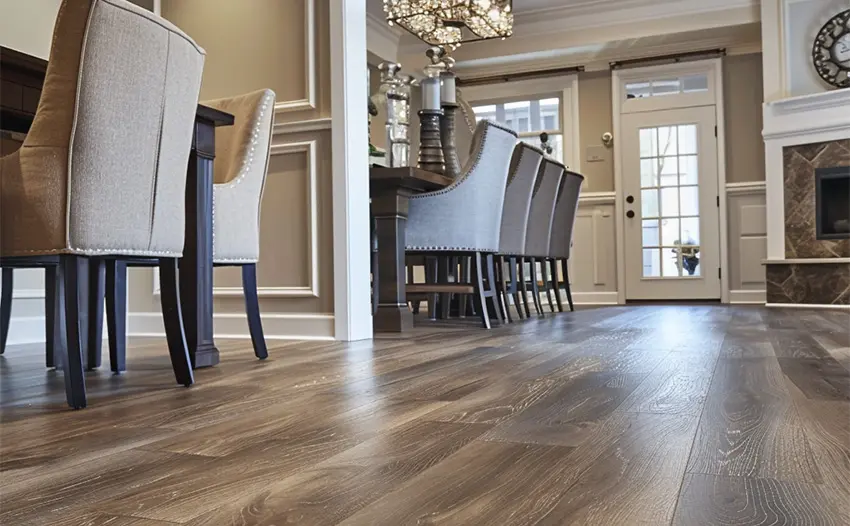
When installing vinyl plank over hardwood, the process generally aligns with standard LVP installation practices. However, there are a few specifics to keep in mind for this unique layering approach:
Firstly, the direction in which you lay the LVP in relation to the existing hardwood planks. For added stability and to prevent the vinyl planks from mirroring any irregularities in the hardwood below, it’s often recommended to install the LVP perpendicular to the hardwood planks.
Another specific consideration is addressing acoustic properties when laying LVP over hardwood. The combination of two hard surfaces can potentially amplify footstep noise and sound transmission. To mitigate this, consider using an acoustic underlayment specifically designed for use with LVP.
This underlayment can go between the hardwood and the vinyl planks, helping to absorb sound and provide a softer feel underfoot. It’s a detail that can make a significant difference in the comfort and noise level of your space, especially in high-traffic areas or multi-story buildings.
Lastly, an additional specific to consider when installing LVP over hardwood is the potential for reduced adhesive effectiveness if opting for a glue-down installation. The existing finish on the hardwood can affect the adhesive’s ability to bond properly. In such cases, a thorough cleaning and possibly lightly sanding the hardwood surface to create a better bonding surface for the adhesive can help a lot.
Finishing Touches
Wrapping up your LVP over hardwood project, it’s those last bits—like transition strips and moldings—that really tie everything together. Transition strips will smooth out the spots where your new vinyl meets the old floor, making everything look intentional and neat. And then there’s the trim—baseboards and moldings. They’re not just for show. They cover up the gaps you left for expansion and help everything blend in.
Once everything’s in place, give the floor a good clean to get rid of any installation mess. Keeping it nice moving forward is simple: just sweep and mop when needed. No special treatments required.
So, there you have it. Putting down LVP over your old hardwood isn’t just about getting a new floor. It’s about making your space work better for you without breaking the bank or turning your home into a construction site. If you’re doing this yourself, take a moment to appreciate what you’ve achieved. It’s a solid piece of work that’ll serve you well, and you did it on your own terms.
About The Author

Daniel Meeks
February 19, 2024
Daniel Meeks is a flooring expert with over 10 years of experience in the industry. Holding a BS in Marketing from Emerson College, Daniel has spent his professional career writing for some of the biggest names in interior design. In his spare time, Daniel enjoys hiking, baking, and hanging out with his dog, Artie.
